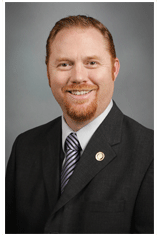Clean Energy: Tomorrow’s challenge calls for action today
The “Dust Bowl” started in the Midwest.
For much of the 1930s, drought and dust beset our entire region from Texas to Nebraska. Temperatures soared, crops failed, and skies blackened with rolling storms of soot. This environmental crisis affected Americans from coast to coast.
Few know that a Kansas City editor for the Associated Press coined the term, “Dust Bowl” [source].
Even fewer realize that this June was the hottest in U.S. history: breaking the record set in 1933 during the Dust Bowl [source].
We face a real threat. Climate change is happening all around us. Climate Deniers who chose not to believe the scientific evidence need only to turn on the nightly news and witness the weather mayhem in every corner of our globe.
Carbon pollution contributes to an increase in frequency and severity of extreme weather. Over the last 30 years, the U.S. has averaged five separate billion-dollar disasters a year. In the last five years, we’ve averaged almost 11 [source].
Kansas City is particularly at risk from climate change. But for us, it’s not rising seas but rising temperatures. Heat waves are expected to become increasingly common. And with the densely clustered, heat-trapping concrete structures that make up Kansas City’s skyline and highways, the threat is particularly impactful. Kansas City is expected to see 20 more days above 90 degrees than nearby rural areas [source]. This increase in temperature threatens the health of our more vulnerable populations such as children and the elderly.
The costs of carbon pollution and aftermath of extreme weather weigh on city and state budgets.
Carbon pollution has been linked as a trigger to asthma attacks and exposure to particle pollution can increase the risk of developing diabetes. Altogether, it is estimated that pollution in the U.S. can shorten one’s life by three years.
We face a real problem. But here in Kansas City, we have accepted the challenge to do our part in finding a solution.
That’s because climate action — like sustainability, clean energy and energy efficiency — does more than cut carbon pollution and combat climate change. It drives innovation, creates jobs and saves money.
Today, 52,000 Missourians work in clean energy—and that number is growing. In fact, Missouri is expected to be a national leader in clean energy job growth, with more than 8% growth this year alone [source].
That’s a huge boost to our economy.

